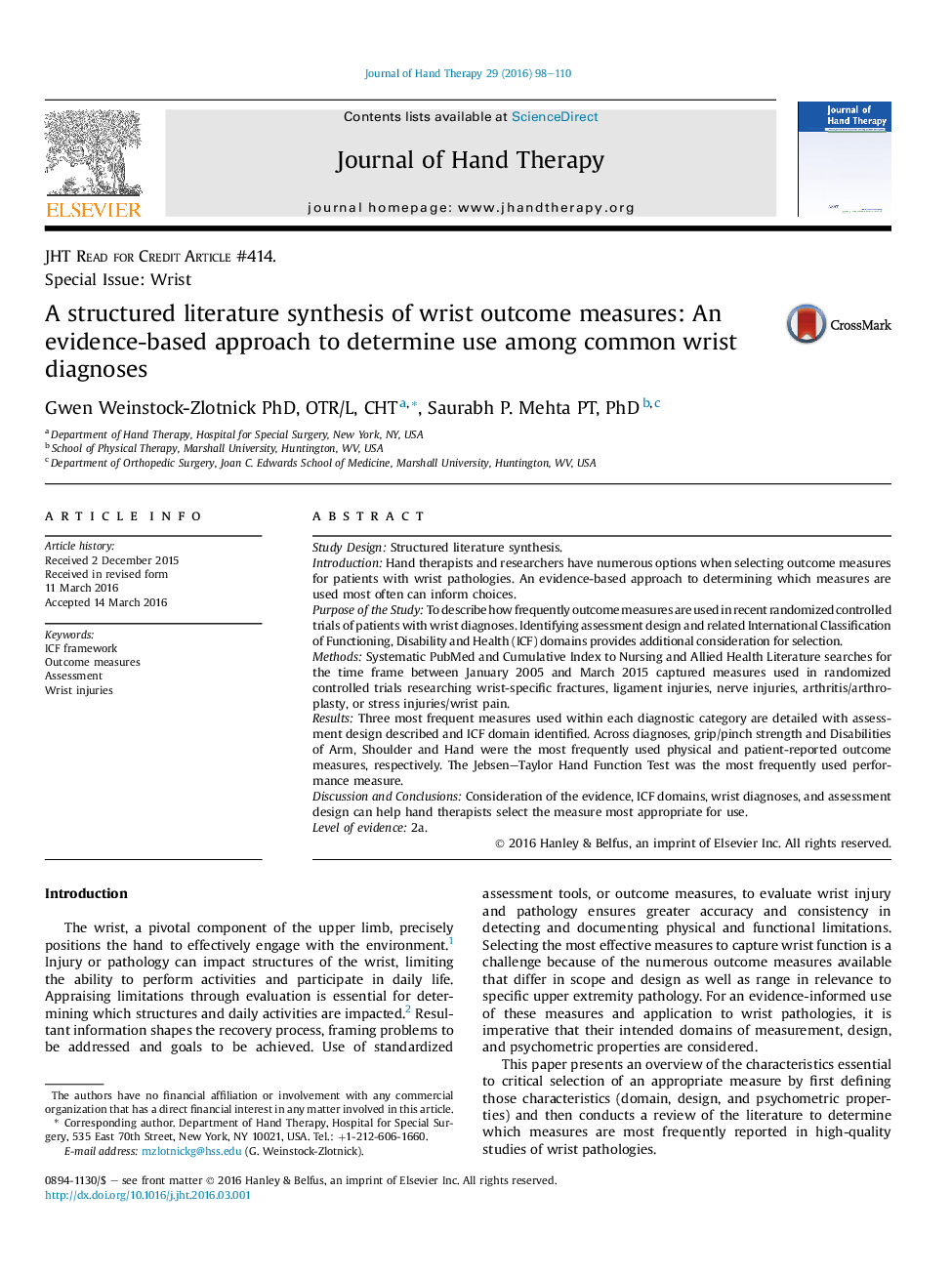| Article ID | Journal | Published Year | Pages | File Type |
|---|---|---|---|---|
| 2690957 | Journal of Hand Therapy | 2016 | 13 Pages |
Study DesignStructured literature synthesis.IntroductionHand therapists and researchers have numerous options when selecting outcome measures for patients with wrist pathologies. An evidence-based approach to determining which measures are used most often can inform choices.Purpose of the StudyTo describe how frequently outcome measures are used in recent randomized controlled trials of patients with wrist diagnoses. Identifying assessment design and related International Classification of Functioning, Disability and Health (ICF) domains provides additional consideration for selection.MethodsSystematic PubMed and Cumulative Index to Nursing and Allied Health Literature searches for the time frame between January 2005 and March 2015 captured measures used in randomized controlled trials researching wrist-specific fractures, ligament injuries, nerve injuries, arthritis/arthroplasty, or stress injuries/wrist pain.ResultsThree most frequent measures used within each diagnostic category are detailed with assessment design described and ICF domain identified. Across diagnoses, grip/pinch strength and Disabilities of Arm, Shoulder and Hand were the most frequently used physical and patient-reported outcome measures, respectively. The Jebsen–Taylor Hand Function Test was the most frequently used performance measure.Discussion and ConclusionsConsideration of the evidence, ICF domains, wrist diagnoses, and assessment design can help hand therapists select the measure most appropriate for use.Level of evidence2a.
